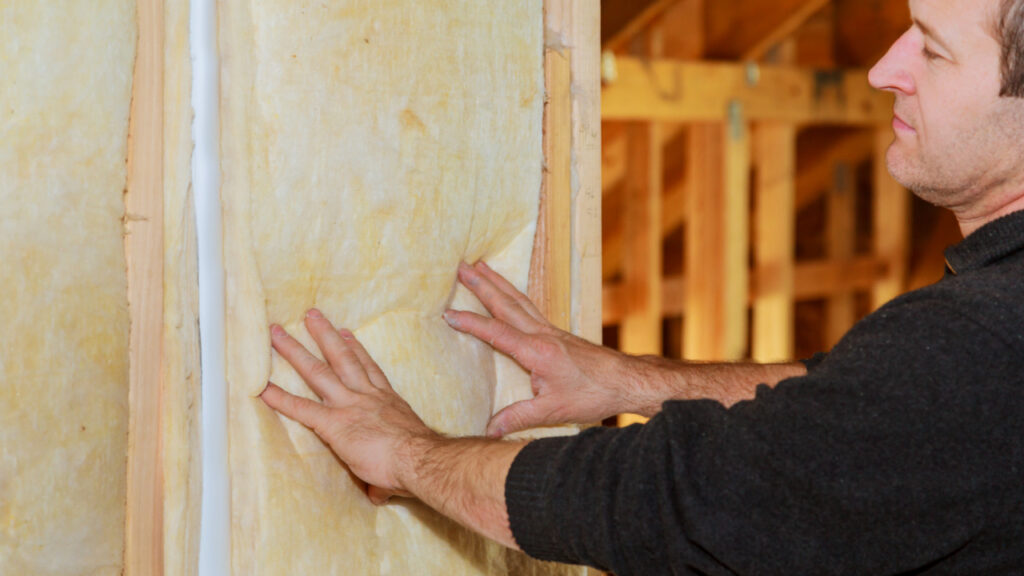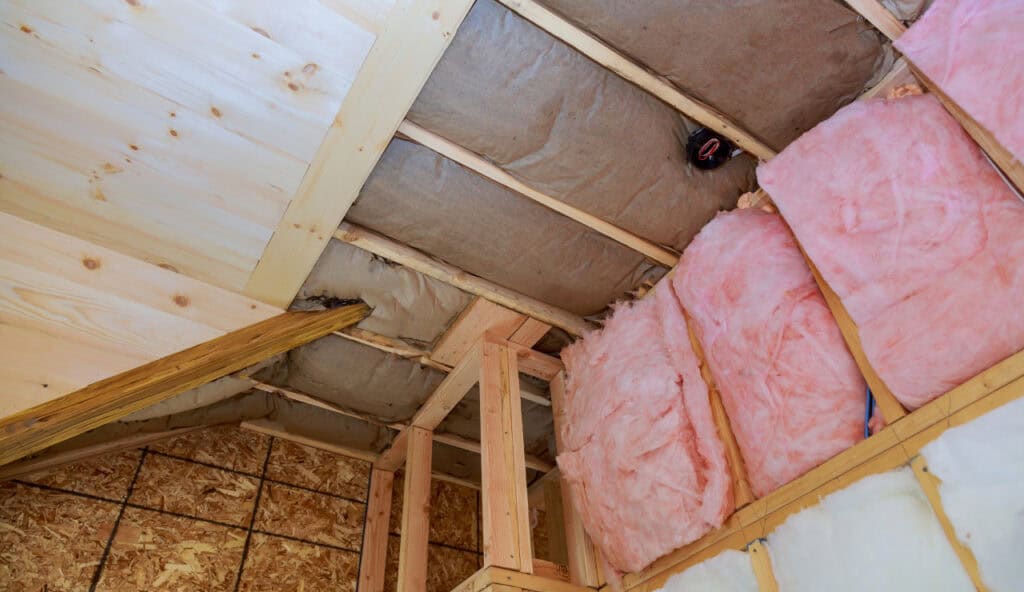We haven’t had a heatwave in awhile but Virginia summers can get hot and humid. Your home’s insulation is a big part of how much of that you feel when you go from outside to inside. And with heat waves happening more often and getting stronger it makes sense to understand on a bsic level how insulation can help.
While air conditioning is the go-to for actively cooling your house, good insulation can also be very effective in keeping your home comfortable and protecting it from the heat.
This article will explore how insulation works against heat transfer, the types of insulation best suited for heat wave protection, and additional strategies to prepare your home for scorching temperatures.
How Insulation Works Against Heat Waves

Home insulation plays a crucial role in protecting homes from heat waves through three key mechanisms: heat resistance, energy efficiency, and structural protection.
Proper insulation materials, whether foam, liquid, or other types, create a barrier that slows heat transfer through the roof and walls. This process not only keeps interiors cooler but also prevents water damage and reduces energy consumption during extreme temperatures.
Heat Resistance
Insulation’s heat resistance plays a crucial role in protecting homes from heat waves by slowing thermal conduction and convection. Quality insulation materials create a barrier that impedes the transfer of heat from the exterior to the interior of a home.
This resistance helps maintain a cooler indoor temperature, reducing the need for excessive air conditioning and lowering electricity consumption. Additionally, proper insulation prevents moisture buildup, which can lead to mold and mildew growth during humid heat waves. The effectiveness of insulation in heat resistance depends on several factors:
- Material type (fiberglass, cellulose, foam)
- Thickness and density of the insulation
- Proper installation techniques
- Strategic placement in walls, attics, and floors
Energy Efficiency
Thermal insulation significantly enhances a home’s energy efficiency during heat waves. By creating a barrier between the hot exterior and cooler interior, insulation reduces the workload on air conditioning systems. This results in lower energy consumption and decreased utility costs.
Proper insulation in walls, ceilings, and floors helps maintain a consistent indoor climate, even as outdoor temperatures fluctuate. During extreme heat, well-insulated homes require less energy to stay cool, contributing to a more sustainable living environment. For more details on our insulation services, visit insulation services in Chesapeake.
Protection from Structural Damage
Proper insulation, including fiberglass and spray foam, helps maintain the integrity of walls and other building components by preventing excessive heat transfer.
A radiant barrier in the attic reflects heat away from the roof, reducing thermal stress on structural elements. This protection not only preserves the building’s longevity but also contributes to a healthier indoor environment. The key benefits of insulation in protecting against structural damage include:
- Minimizing thermal expansion and contraction of building materials
- Preventing moisture accumulation and associated damage
- Reducing the risk of warping, cracking, or deterioration of structural components
- Enhancing the overall durability and lifespan of the home
Types of Insulation and Their Benefits

Different types of insulation offer unique benefits for energy conservation and heat protection. Attic insulation, wall insulation, and floor insulation each play crucial roles in maintaining a comfortable home environment. From mineral wool to environmentally friendly options, these insulation types work together to create a barrier against electromagnetic radiation and excessive heat, while maximizing living space.
Attic Insulation
Attic insulation plays a crucial role in protecting homes from heat waves. Proper attic insulation reduces greenhouse gas emissions by minimizing the need for excessive cooling. It acts as a barrier, preventing heat from entering through the roof and windows, which helps maintain a comfortable indoor temperature and reduces the risk of heat stroke. Homeowners should consider installing a ventilator in conjunction with attic insulation to enhance air circulation and further improve energy efficiency.
Wall Insulation
By creating a thermal barrier, it prevents the transfer of heat through walls and windows, keeping interiors cooler and reducing the strain on cooling systems. This scientific approach to home insulation not only enhances comfort but also contributes to lower greenhouse gas emissions by decreasing energy consumption.
Properly insulated walls work in conjunction with roofing materials to form a comprehensive shield against extreme temperatures, ensuring a more stable and comfortable living environment during intense heat periods.
Floor Insulation
Floor insulation is key to keeping homes cool during heat waves. It increases the building’s thermal mass, helping to control indoor temperatures and lower humidity.
This insulation acts as a barrier, preventing heat from rising from the ground, which makes your home more comfortable during extreme heat. Proper floor insulation can also boost your home’s energy efficiency and comfort.
- Reduces heat gain from the ground during summer months
- Helps maintain consistent indoor temperatures
- Minimizes moisture-related issues in crawl spaces
- Enhances the effectiveness of HVAC systems
- Contributes to lower energy costs and improved comfort
Additional Strategies for Heat Wave Preparedness

While proper insulation is crucial for heat wave protection, additional strategies can enhance home preparedness. The methods below work alongside insulation to improve airflow, regulate floor temperature, and reduce reliance on non-renewable energy sources, ensuring a cooler, more comfortable living space during extreme heat events.
Seal Cracks and Gaps
Sealing cracks and gaps in a home is essential for keeping it cool during heat waves. By closing these openings, homeowners block hot air from entering and stop cool air from leaking out. This easy but effective step works well with insulation, improving the home’s ability to stay cool.
Homes that are properly sealed need less energy for cooling, leading to lower energy bills and better comfort during extreme heat.
| Benefits of Sealing Cracks and Gaps | Impact on Heat Wave Protection |
|---|---|
| Prevents hot air infiltration | Maintains cooler indoor temperatures |
| Reduces cool air escape | Improves air conditioning efficiency |
| Enhances insulation effectiveness | Strengthens overall heat resistance |
| Lowers energy consumption | Decreases utility costs during heat waves |
Use Reflective Materials
Reflective materials are important for cutting down heat absorption during heat waves. By using reflective coatings or installing radiant barriers in attics and walls, homeowners can greatly reduce the amount of heat that enters their homes. These materials, often made from polystyrene or similar substances, work by bouncing solar radiation away from the building.
This keeps the inside cooler and lowers energy use, as it reduces the strain on air conditioning systems. Reflective materials also protect the exterior of the home, helping extend the life of materials exposed to strong sunlight.
Install Shading Devices
Installing shading devices is a smart way to combat heat waves and reduce the strain on your home’s insulation. Devices like awnings, blinds, or solar screens block infrared radiation from entering, helping keep the interior cooler and lessening the load on your air conditioner and fridge.
Shading can also aid with soundproofing, making your home more comfortable during extreme heat. As heat waves become more common with climate change, combining shading with good insulation and smart clothing choices can greatly increase your home’s ability to stay cool.
- External awnings or overhangs to shade windows
- Reflective window films to reduce heat gain
- Outdoor vegetation for natural shading
- Interior blinds or curtains to control sunlight
- Retractable shade sails for outdoor spaces
Maintain HVAC Systems
Regular HVAC maintenance is key to staying cool during heat waves and ensuring your insulation works its best. A well-maintained system improves ventilation, reduces moisture buildup, and acts as an extra layer of insulation against extreme temperatures.
By keeping HVAC parts clean and running smoothly, homeowners can cut down on indoor pollution and boost energy efficiency. Proper care also prevents the system from overworking during heat waves, lowering energy use and extending the life of both the HVAC system and insulation materials.
| HVAC Maintenance Task | Impact on Heat Wave Protection |
|---|---|
| Clean or replace air filters | Improves air quality and system efficiency |
| Check and clean condenser coils | Enhances cooling capacity |
| Inspect ductwork for leaks | Prevents cool air loss and moisture buildup |
| Calibrate thermostat | Ensures accurate temperature control |
Universal Insulation Doctor’s Professional Insulation Services

At Universal Insulation Doctor, we understand the significance of upholding effective insulation in your residence. Our trusted insulation service is designed to elevate the coziness and energy efficiency of your attic living areas.
We are one of the top insulation companies operating in and around Chesapeake, going strong for ten years. With an A+ rating from the Better Business Bureau, we have proven time and again that customer satisfaction is our top priority.
Whether you need work done in your attic, crawl space, or somewhere in between, we’ll be there to make sure it gets done right.
Contact Universal Insulation Doctor today to arrange a professional insulation service in Portsmouth. Call us at 757-962-0340 and discover the remarkable difference that expertise in the insulation industry can bring!
Frequently Asked Questions
Insulation is most effective against which mode of heat transfer?
Insulation is most effective at reducing heat transfer by conduction, which is the direct transfer of heat through materials. It slows down the movement of heat between the inside and outside of a home, helping maintain a comfortable temperature. For those looking into enhancing their home's energy efficiency and comfort, exploring various insulation services can be a significant first step.
What types of insulation are most effective against extreme heat?
Fiberglass and cellulose insulation are highly effective against extreme heat. Reflective barriers like radiant barriers also excel in hot climates by reflecting heat away from living spaces. Proper installation and air sealing are crucial for maximizing any insulation's performance in extreme temperatures.
Can I install insulation myself to prepare for heat waves?
While DIY insulation installation is possible, it's not recommended for preparing for heat waves. Professional installation ensures proper coverage, correct materials, and safety precautions. Improper installation can lead to reduced effectiveness, and potential health hazards, and may void warranties. For optimal results, consult a certified insulation contractor.
How does insulation work with other heat-reducing strategies in my home?
Insulation works synergistically with other heat-reducing strategies to enhance home comfort and energy efficiency. It complements proper ventilation, reflective roofing, energy-efficient windows, and strategic landscaping by creating a thermal barrier that minimizes heat transfer, ultimately reducing the workload on HVAC systems and lowering energy costs.
Do homes in Hampton Roads often have insulation?
Yes, most homes in Hampton Roads have some form of insulation or another. We do not have as much as some of the colder climates but we run into some newer builds near Rudee Heights by High Point Ave and Arctic Ave that have no insulation at all!
What are the long-term benefits of insulating my home against heat waves?
Insulating your home against heat waves provides long-term benefits including reduced energy bills, improved indoor comfort, and increased property value. Proper insulation helps maintain consistent temperatures, reduces strain on HVAC systems, and creates a more sustainable living environment, contributing to lower carbon emissions over time. Insulation checklist know what to insulate and why








